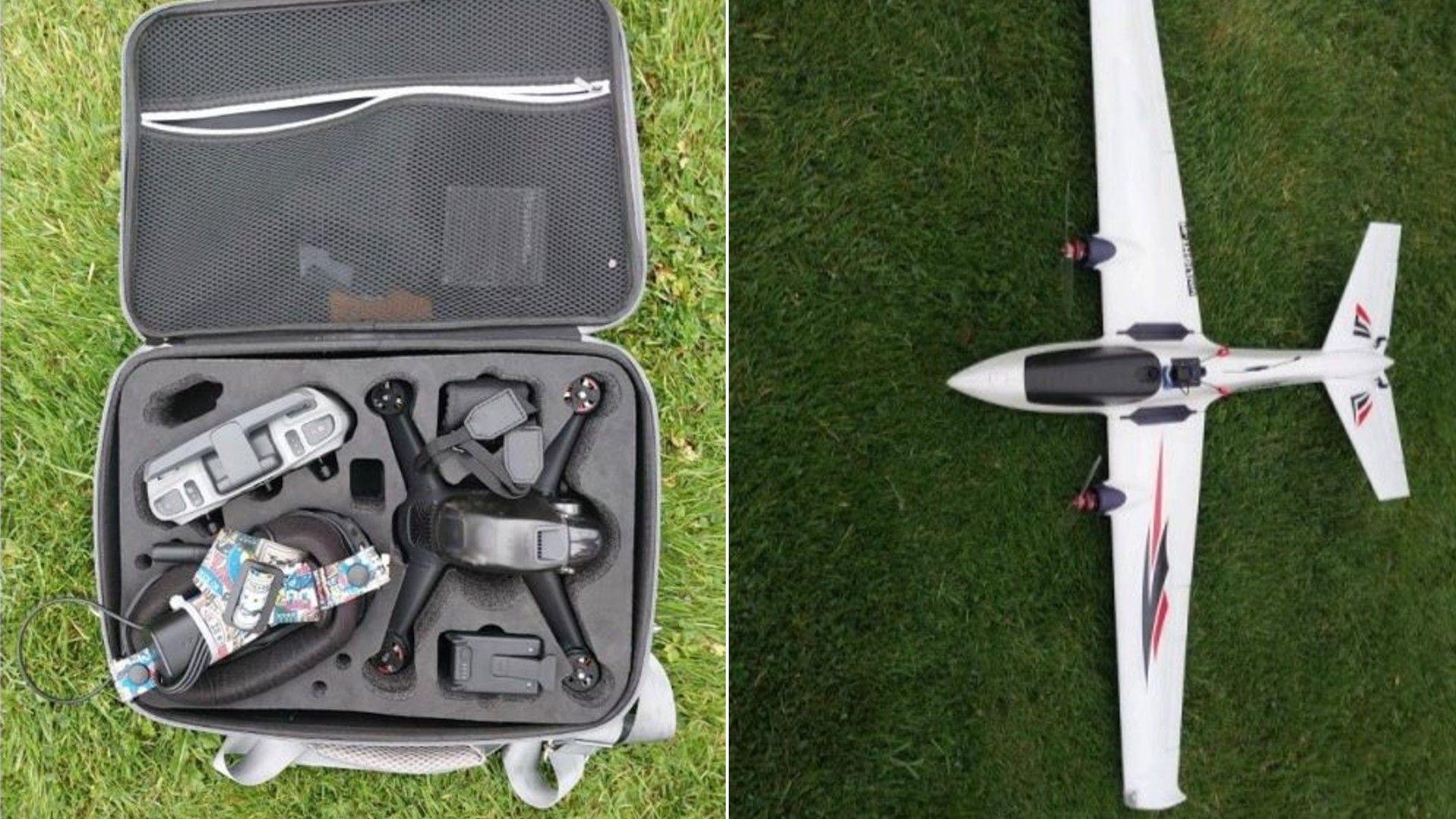Drone pilot causes RAF to divert aircraft

A destruction order was imposed on the drone equipment seized by police
- Published
An enthusiast who flew his drone so high he caused the RAF to divert flights showed "a blatant" disregard for the law, police said.
Thomas Ling, 34, of Main Road, Brothertoft, pleaded guilty to four offences at Boston Magistrates' Court on Wednesday.
He was handed fines and costs totalling more than £1,200 and a destruction order was imposed on his equipment.
Lincolnshire Police said Ling's actions posed a significant risk to the safety of others.
'High altitude'
Rules set out by the Civil Aviation Authority state a drone must be kept within visual line of sight to ensure it does not crash into a structure or cause a danger to aircraft, with a maximum height restriction of 400ft (120m).
However, police said between 1 March and 18 June Ling had flown his first-person view drone at heights of up to 12,178ft (about 3,700m) on 26 occasions in the Boston area.
The risk Ling posed by flying his drone so high led to flights by the RAF, the air ambulance and the National Police Air Service being diverted, the force said.
Lincolnshire Police's chief drone pilot and safety manager Kev Taylor said: "The regulations are there to ensure drones are operated safely without causing a risk to the public and airspace users.
"Ling's drone was adapted so that it could be flown at such high altitudes, often flying between 7,000 and 12,000 feet," he said.
Mr Taylor said the area where Ling had flown his drone was close to RAF Coningsby, home to Typhoon jets and the Battle of Britain Memorial Flight.
"Ling has shown a repeated and blatant disregard for the legislation and the safety of both the public and airspace users in Lincolnshire," he added.
Follow BBC Lincolnshire on Facebook, X (formerly Twitter), external, and Instagram. Send your story ideas to eastyorkslincs.news@bbc.co.uk, external